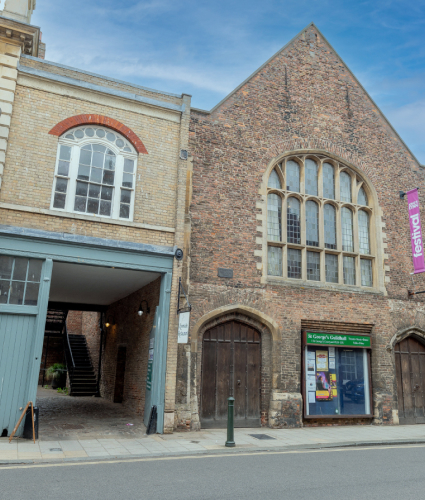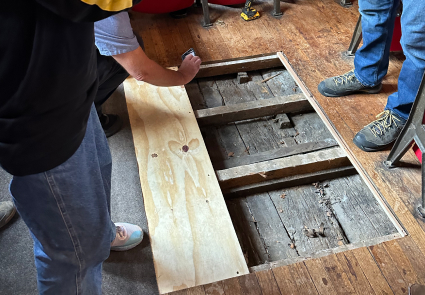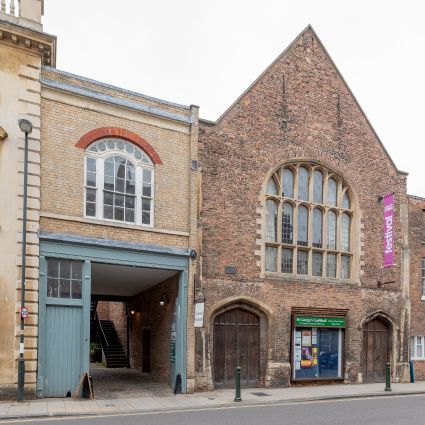

The Guildhall and Creative Hub site is one of very special heritage significance. Current buildings date from 1406 and much of the original fabric remains; including the amazing floor. The wooden floor of the Guildhall is the largest expanse of 15th century timber first flooring left in the UK. Many of the windows are original and the scissor brace ceiling is one of the largest left in the country. However, the heritage doesn’t just stop there. Almost every phase of building after 1406 is represented on site: from the 1561 Dinsdale warehousing at the west end by the river through the 1600’s, 1700’s and 1800’s to the barns of the 1950’s and 1960’s. The records of merchants and tradespeople are rich and list many different professions happening on the site: for example; fishmongers, brewers, painters, sailmakers and wine merchants. In 1588 alone in the Guildhall a French school, the quarterly Judicial court and Queen Elizabeth 1st’s players all jostled for space on what was a very busy site.
There has been a long tradition that Shakespeare played at the Guildhall in King’s Lynn. People in King’s Lynn were told this by their parents who were told this by their parents and grandparents. This is not new. For example, in 1766 the pub next to the Guildhall (now called Shakespeare House) was named the Shakespeare Pub and had a picture of Shakespeare on the front of it to reflect these links. There are several things which support the oral tradition of the town. In 1592/3 the company associated with Shakespeare, the Earl of Pembroke’s Men, were paid to play in King’s Lynn when the theatres in London were shut due to the plague. At this time Shakespeare was an actor as well as a writer according to a work by Robert Greene of 1954 calling Shakespeare an ‘upstart crow’.
Shakespeare’s comedian Robert Armin was born in King’s Lynn one street from the theatre (you can see a green plaque on his house on the High Street). Armin was a very close collaborator of Shakespeare’s and was the first person to play many of the most famous comedic roles Shakespeare created. Documents from Shakespeare’s lifetime reference an event that occurred in the theatre in ‘Linn, Norfolk’ which is said to have inspired Shakespeare to write part of the plot of Hamlet. Come, take a free tour with one of our guides and ponder it for yourself.

The Guildhall Theatre has an unparalleled history of dramatic performance. We call it the oldest working theatre. It is the only working theatre in the world to have recorded drama in the 1400’s, 1500’s, 1600’s, 1700’s, 1800’s, 1900’s and still to be running in the present day. Yes there have been gaps over the years: during the English Civil War the Guildhall was used as an armoury. Yet this consistency of all phases of dramatic history in one place is unique. The venue was established in 1406 by Henry IV for the Guild of St George. New research suggests that the Guild used its hall for entertainment right from the start.
In 1445/6 we have records of four sets of performances: three by professional touring companies and one by local people doing a nativity play. By the late 1500’s the venue was a major destination on the touring circuit with Queen Elizabeth I’s Players coming here ten times. By the 1700’s drama was so popular at the venue that a new playhouse was inserted into the space in 1766. Why not come, enjoy a free tour with one of our guides and they can take you through the centuries of entertainment here.
Although the Guildhall is currently closed for archaeology, you can still visit 29 King’s St, to find out about our past and our exciting project to renovate the country’s oldest working theatre.
